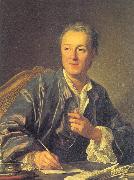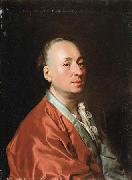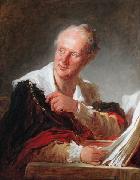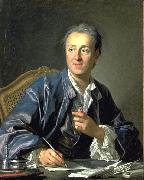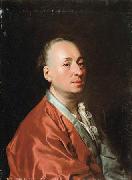Wholesale Oil Painting No Minimum |
|||||||||||
|
|
|||||||||||

|
|||||||||||
|
|
|
||||||||
Loo, Louis-Michel vanFlemish active in France, 1707-1771 Painter, son of Jean-Baptiste van Loo. He trained with his father in Turin and Rome, later attending the courses of the Acad?mie Royale in Paris. He received the institution's first prize for painting in 1726, and in 1728, accompanied by his brother, Fran?ois, and his uncle, Carle, returned to Rome where he was associated with Francois Boucher. On his way back to France, he stayed for a time in Turin, painting portraits of the royal family of Sardinia, the Duke and Duchess of Savoy. In Paris he was admitted to membership of the Acad?mie Royale and in 1735 was appointed assistant teacher at the Academie, becoming renowned as a specialist in portrait painting. Most of his portraits from this period are half-length, combining ideas from Hyacinthe Rigaud's later work with other more natural and innovative ones. On the death of Jean Ranc, Philip V of Spain asked Rigaud to suggest a substitute, and van Loo was proposed. He arrived in Madrid in 1737 and remained there as Pintor de la Corte until 1752, responding with modern aesthetic ideas to the demands of the Spanish monarchs for pomp and splendour. He carried out court commissions but devoted part of his time to teaching, his pupils often becoming studio assistants. He also took an active part in meetings held over a number of years to establish the Real Academia de Bellas Artes de S Fernando, for which he produced the canvas, the Education of Cupid by Venus and Mercury |
||||||||
|
|
||||||||
Portrait of Denis Diderot
Portrait of Denis Diderot Painting ID:: 19205 |
1767, canvas, Mus??e du Louvre, Paris 1767, canvas, Mus??e du Louvre, Paris |
|||||||
|
|
||||||||
|
|
||||||||
|
|
Portrait of Denis Diderot
Portrait of Denis Diderot Painting ID:: 77296 |
1773(1773)
Oil on canvas
cjr 1773(1773) Oil on canvas cjr |
||||||
|
|
||||||||
Jean Honore Fragonard1732-1806 French Jean Honore Fragonard Locations French painter. He studied with François Boucher in Paris c. 1749. He subsequently won a Prix de Rome, and while in Italy (1756 ?C 61) he traveled extensively and executed many sketches of the countryside, especially the gardens at the Villa d Este at Tivoli, and developed a great admiration for the work of Giovanni Battista Tiepolo. In 1765 his large historical painting Coresus Sacrifices Himself to Save Callirhoë was purchased for Louis XV and won Fragonard election to the French Royal Academy. He soon abandoned this style to concentrate on landscapes in the manner of Jacob van Ruisdael, portraits, and the decorative, erotic outdoor party scenes for which he became famous (e.g., The Swing, c. 1766). The gentle hedonism of such party scenes epitomized the Rococo style. Although the greater part of his active life was passed during the Neoclassical period, he continued to paint in a Rococo idiom until shortly before the French Revolution, when he lost his patrons and livelihood. |
||||||||
|
|
||||||||
|
|
Portrait of Denis Diderot
Portrait of Denis Diderot Painting ID:: 77489 |
ca. 1769(1769)
Medium Oil on canvas
Dimensions 81.5 ?? 65 cm (32.1 ?? 25.6 in)
cyf ca. 1769(1769) Medium Oil on canvas Dimensions 81.5 ?? 65 cm (32.1 ?? 25.6 in) cyf |
||||||
|
|
||||||||
|
|
||||||||
|
|
Portrait of Denis Diderot
Portrait of Denis Diderot Painting ID:: 78388 |
1767(1767)
Oil on canvas
81 x 65 cm (31.9 x 25.6 in)
cjr 1767(1767) Oil on canvas 81 x 65 cm (31.9 x 25.6 in) cjr |
||||||
|
|
||||||||
Dmitry Levitzky1735-1822) was a Russian-Ukrainian portrait painter. Dmitry was born in Kiev, Ukraine, in a family of clergyman and engraver Grigory Levitzky. His father was his first art teacher. Later be became a pupil of Aleksey Antropov who came to Kiev to paint the Cathedral of St. Andrew. In 1770, Levitzky became famous as a portrait painter after the exhibition of six of his portraits in the Imperial Academy of Arts in St. Petersburg. For the portrait of Alexander Kokorinov, Director and First Rector of the Academy of Arts in St. Petersburg (1769) he was elected an academician and appointed the Professor of the portrait painting class at the Academy of Arts. |
||||||||
|
|
||||||||
|
|
Portrait of Denis Diderot
Portrait of Denis Diderot Painting ID:: 80698 |
1773(1773)
Medium Oil on canvas
cyf 1773(1773) Medium Oil on canvas cyf |
||||||
|
|
||||||||
|
Dmitry Levitzky 1735-1822) was a Russian-Ukrainian portrait painter. Dmitry was born in Kiev, Ukraine, in a family of clergyman and engraver Grigory Levitzky. His father was his first art teacher. Later be became a pupil of Aleksey Antropov who came to Kiev to paint the Cathedral of St. Andrew. In 1770, Levitzky became famous as a portrait painter after the exhibition of six of his portraits in the Imperial Academy of Arts in St. Petersburg. For the portrait of Alexander Kokorinov, Director and First Rector of the Academy of Arts in St. Petersburg (1769) he was elected an academician and appointed the Professor of the portrait painting class at the Academy of Arts. Portrait of Denis Diderot 1773(1773) Medium Oil on canvas cyf |
||||||||
|
|
||||||||
|
Prev Next
|
||||||||
|
|
||||||||
|
Related Paintings to Dmitry Levitzky :. |
||||||||
|
|
||||||||
|
CONTACT US |
